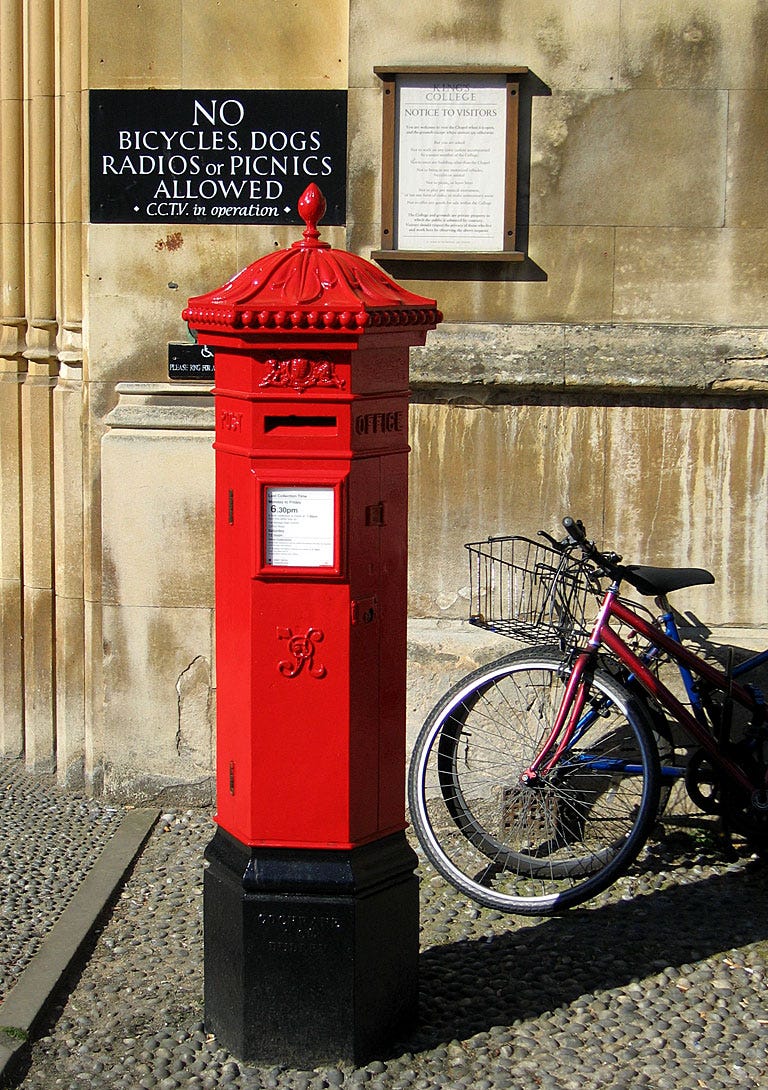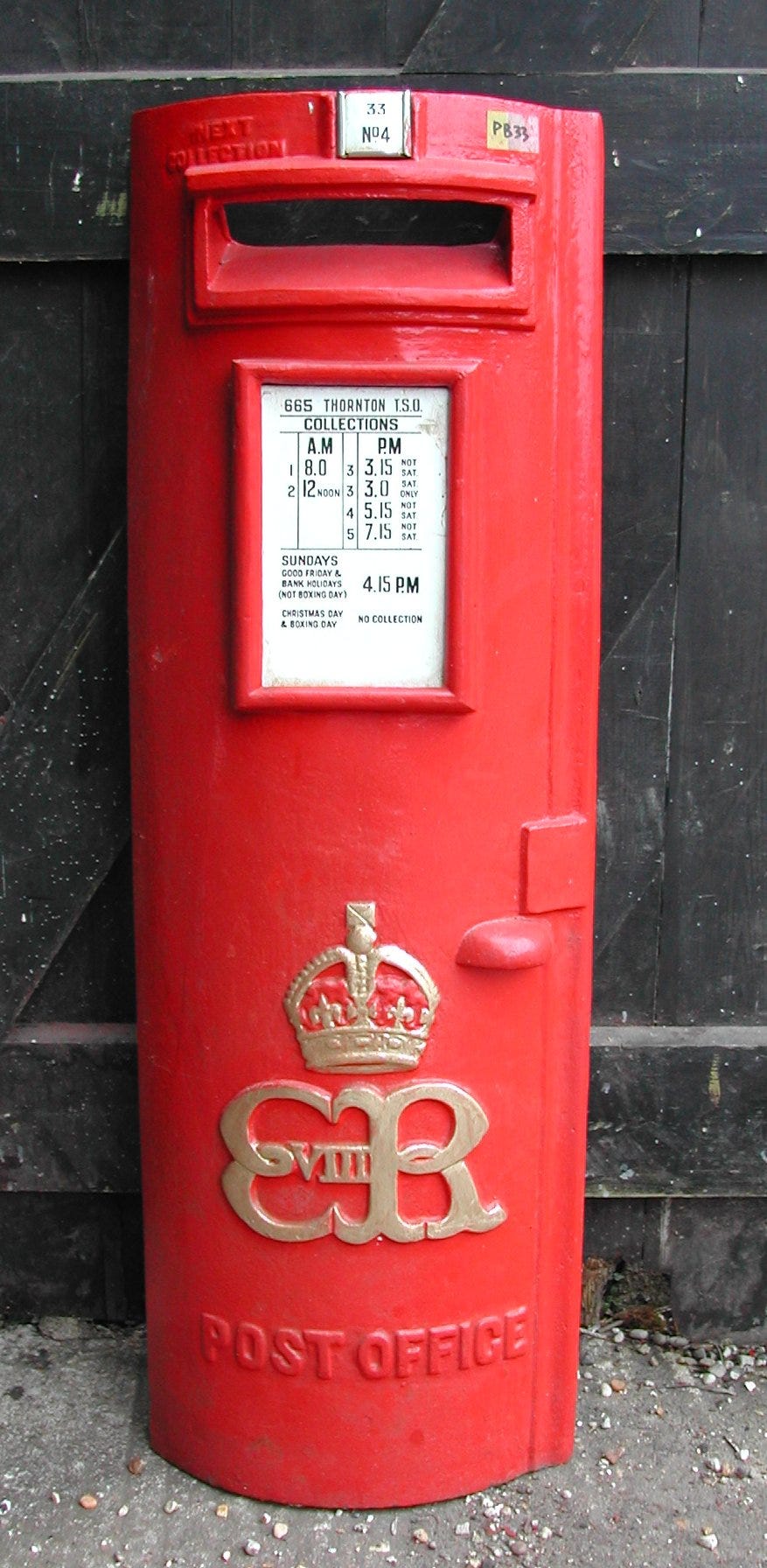First, the story of the first postbox
Under milkwood
The Year of Our Lord 1500. The rebukes of the Zamorin of Calicut still smarting in his ear, Pêro de Ataíde sets off for home. This seadog, the bastard son of Da Gama and Lusus himself, sets out on the black face of the ocean. His fleet faces the expanse of the storied Arabian Sea, where untamed Neptune bids the mighty deep sate its appetite on ill-fated voyagers.
The Southern Cape devours his caravels like so many whitebait. Ashore, wrecked and desperate, de Ataíde pens a hasty message reporting political calumny on the Malabar Coast and the offence done to the sea god. He ties his missive in a salt-stained leather boot suspending it from the branches of an ancient milkwood tree near a freshwater spring.
The southern stars do not cross us as their northern cousins do: a year scarcely passed, de Ataíde's intended interlocutor - João de Nova - comes across the tree. Poseidon's breath at his back, he finds a forgotten boot and, in it, a note. The miracle requires due homage, and other sailors begin leaving their own messages in boots or jars beneath the tree, trusting that their countrymen will find and deliver them, west or east. Thus was the first postbox consecrated.
British postboxes
The birth of the British pillarbox is another nautical story. Sir Rowland Hill sent the novelist Anthony Trollope to survey the Channel Islands' mail collection issues; there were issues in getting mail to the mainland caused by irregular sailing times to and from the islands. Trollope’s solution was that Hill employ “letter-receiving pillars” like those he had seen in Paris. Stolen from the French, for-shame, the first four, olive green and octagonal, were erected in St Helier in November 1852, and three on Guernsey in February 1853. There have been myriad iterations of the design. I like the modern ones plenty, but the slender hexagonal Penfold, with its top like the eaves on a Chinese temple, is a particularly lovely thing.

Postboxes are that most lovely of things: useful but beautiful, like a teapot or an aeroplane. They are literal anchors - the cast iron “carcass” (yes that’s what it’s called) extends several feet down into the ground - but figurative ones too: every post box displays the Royal Cypher of the monarch in whose reign it was installed. There are VRs, and E-VII-Rs, and two lots of Georges besides the E-II-Rs of Her Lately Departed Majesty. There are even 150 E-VIII-Rs (pictured), with the cypher of the uncrowned Edward VIII, the Duke of Windsor.
Full credit to the South African postal service who still, I understand, operate the post from de Ataíde’s tree. Irish green is fine and La Poste’s ultracitron is jolly enough. But it’s the bright red of British pillarboxes I love most. I understand from a Freedom of Information Act request (not mine I hasten to add) that they are painted in - what else - “Royal Mail Red” (colour ref no. 538 BS381C). That bold red, it seems to me, is a colour that so finely compliments the English suburban or rural scene as to seem a natural part of it. It is as if the postbox has grown, like a milkwood tree, out of the misty village common, drystone wall or trip-hazard avenue pavement. Olive green is a colour suited only to olives.
Postboxes. I love postboxes.





